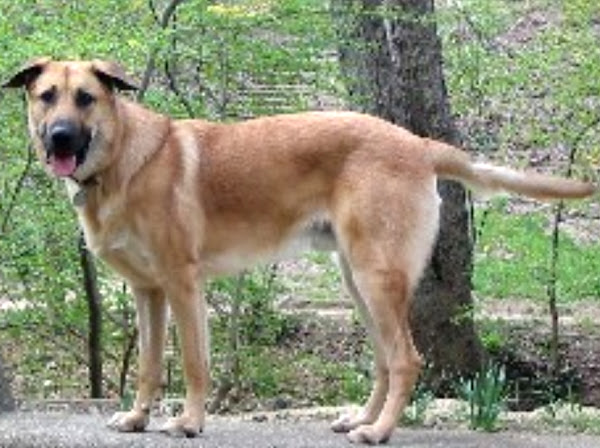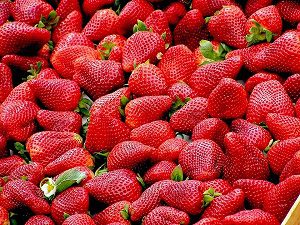The Chinook dog is a breed of sled dog. It was developed in the state of New Hampshire during the early twentieth Century. It is a multipurpose dog which is happy hiking, competing in agility and other dog sports (pulling a sled or other conveyance, and playing with the kids).
The breed was created in the White Mountains of New Hampshire, and it made it’s name on Admiral Byrd’s first Antarctic expedition in 1928. The Chinook is New Hampshire’s official state dog.
When Arthur Walden bred a farm dog with a husky on his Wonalancet, New Hampshire farm, he little knew that the result would be a legendary line of sled dogs.
Walden, who had been a dog driver in Alaska for a time, brought the sport of sled dog racing to New England. On of the puppies from the aforemention litter, named ‘Chinook’ after the warm winds that melt Alaska snows, stood out for his good looks, temperament and working ability, and his puppies followed in his footprints.
When Admiral Byrd was planning his expedition to Antarctica in 1928, he called on Walden and his Chinook dogs for transport. The original Chinook was part of the team.[1]
Today, the Chinook dog breed is still hard to find. It is recognized by the United Kennel Club and is in the process of seeking recognition by the AKC (American Kennel Club).
Chinook Dog Characteristics
The Chinook dogs are very beautiful, balanced and muscular. They have thick coats and shed heavily twice a year. The rest of the year they shed small amounts daily.
The United Kennel Club (UKC) breed standard states, “The ideal coloration runs from light honey color to reddish-gold. Black markings on the inside corners of the eyes are preferred. Dark tawny to black markings on the ears and muzzle are preferred. Guard hairs on the tail may be black. No white markings are allowed. Buff markings on the cheeks, muzzle, throat, chest, breeches, toes and underside are acceptable.”
The UKC standard faults any color other than tawny and disqualifies albinism. Other proposed standards state that the medium-length double coat is “tawny” in color, with darker shadings on muzzle and ears; white dogs are not allowed, nor are other colors. Eyes are brown to amber in color.
Ear carriage is variable, but dropped is preferred and the head more strongly rectangular than other sleddog breeds. The tail is a well-furred saber and not the usual brush or plume of Arctic breeds. Overall, the Chinook seems to owe more to molosser than to spitz ancestry.[2]
The Chinook dogs are medium sized animals. Average body height of the mature animals is between 23 and 27 inches at the withers for males and between 21 and 25 inches for the females. Average live body weight of the mature dogs is between 25 and 41 kg.

Temperament
The Chinook dog is an affectionate and playful family companion with a special devotion toward children. It is a willing worker who is eager to please and enthusiastic to learn.
These dogs are highly trainable, adaptable and versatile in their abilities. They are gregarious with other dogs, and they generally work well in teams and within family packs. They are dignified dog; some may be reserved with strangers but should never appear shy or aggressive.
Like many other dogs, the Chinook dogs need early socialization. Exposure to many different people, sights, sounds and experiences is important.
Lifespan
Average lifespan of the Chinook dog is between 13 and 15 years.
Feeding
How much a mature dog eats depends on it’s size, age, build, metabolism and activity level. Dogs are individuals, just like people, and they don’t all need the same amount of food.
The Chinook dogs are medium in size and they are moderately active. So, their diet should be formulated for a medium sized breed with moderate exercise needs. Generally 3 to 4.5 cups of high quality dry dog food will be enough per day. Although you can consult with a vet in your area for better feeding recommendations.
Caring
Taking good care of the animals is very important for raising Chinook dogs. You should always keep up with your dog’s regular veterinary checkups to detect any health concerns early.
The Chinook dogs generally love their people and they won’t be happy living outdoors away from them. They are adaptable to most homes as long as their exercise needs are met.
The Chinooks are very active dogs and they need half an hour to an hour of daily exercise. Underground electronic fencing is not recommended for this breed since Chinooks are so determined to get where they want to they will ignore any shocks.
The double-coated Chinook has medium length hair with a thick, soft undercoat and a coarse outer coat. Chinooks who live in warm climates tend to have coats that are less dense than those of Chinooks in colder environments.
Daily brushing keeps the Chinook clean and the shedding under control. Be sure to brush all the way down to the skin. The Chinook rarely needs more than a bath or two a year.
Health
The Chinook dogs are generally healthy. But like all other dog breeds, they are also prone to certain health conditions.
Their common health problems include cataracts, gastrointestinal issues, hip dysplasia and seizures. Always try to keep good contact with a vet in your area.
| Breed Name | Chinook |
| Other Names | None |
| Breed Size | Medium to large |
| Height | Between 23 and 27 inches at the withers for males and between 21 and 25 inches for the females |
| Weight | Between 25 and 41 kg |
| Good as Pets | Yes |
| Climate Tolerance | All climates |
| Color | Black & Tan, Buff, Grey & Tan, Fawn, Tawny, White |
| Lifespan | Between 13 and 15 years |
| Good for Children | Yes |
| Rarity | Common |
| Country/Place of Origin | United States |






